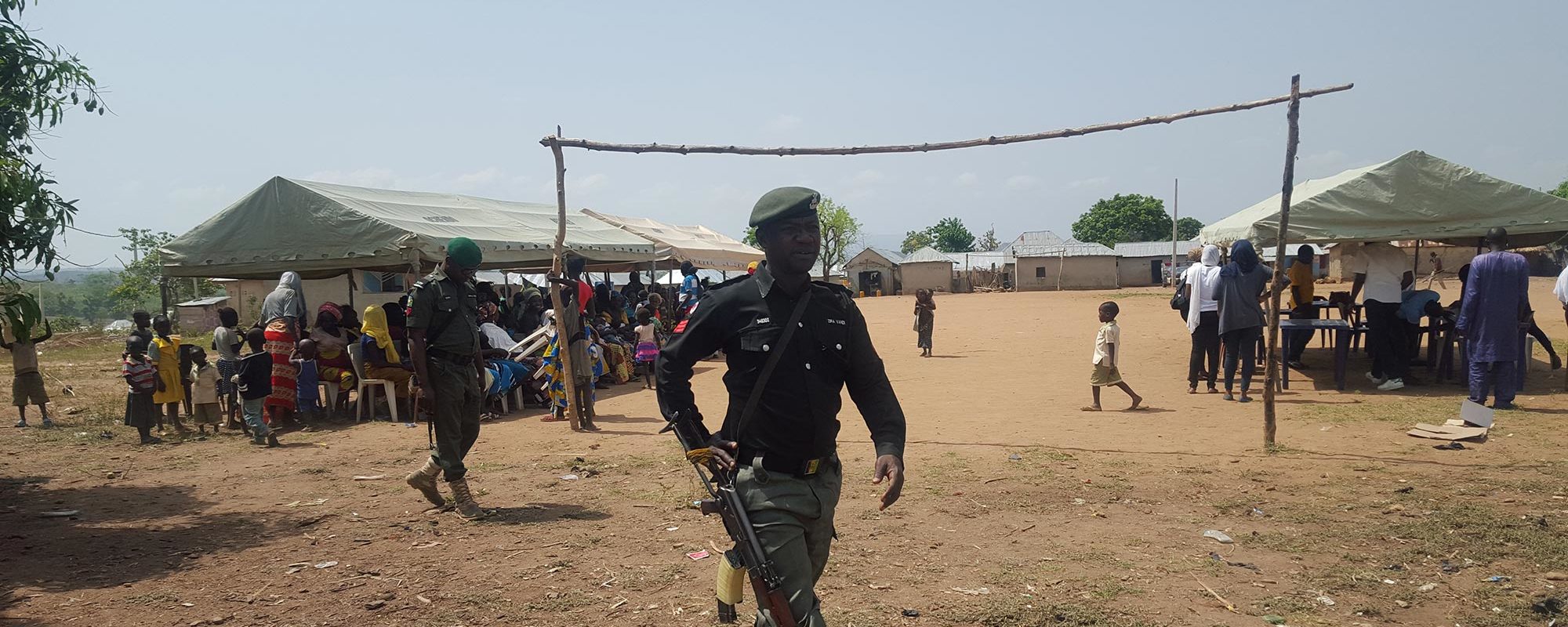ABUJA, Nigeria — Twenty-five-year-old Lydia lives in the Kuje camp for internally displaced people (IDP) outside the nation’s capital. She came here shortly after the militant group Boko Haram kidnapped 276 girls from a secondary school in her northern hometown of Chibok in April 2014. It was just one of many acts of violence against the local population. Boko Haram terrorists have also burned down homes, staged constant kidnappings and slaughtered residents. “We suffered before we came here,” the slender and dark-complexioned Lydia said as she held her sleeping firstborn son. She frantically escaped through the surrounding forests together with others, not knowing exactly where she was headed.
Lydia found her way to Abuja on public buses, guided by directions from a relative over a cell phone from the Kuje camp. Now four months’ pregnant with her second child, she spoke to me with a soft and carefree-sounding voice. She was wearing a pink and white blouse with a matching long skirt and her head wrapped in the same color fabric. “We got on the road with no money. We stayed in the forest for about a week; everybody went in different directions.”
Lydia is just one of the more than 2.6 million people Boko Haram has displaced from their homes since the insurgency against Westernization in Nigeria started in 2009. Meanwhile, the violence continues. On February 19, 2018—with the country still awaiting the release of 112 Chibok girls stuck in Boko Haram captivity—the group allegedly abducted another 110 girls from the Government Girls Science and Technical College in the town of Dapchi in Yobe state (which borders Niger). Dapchi has a savannah-like terrain with few trees that is surrounded by sand dunes, making it difficult to understand how the abductors could have arrived without being noticed. How did such a massive abduction happen again? Were there no security measures in place after the experience with the Chibok girls? I wanted to find out.
Kuje
I visited the Kuje camp with a Fulbright scholar, Florby Dorme, and his team of 10 volunteers who were conducting research on the reproductive health needs of women in IDP camps. Reproductive health, including access to family planning services, remains a neglected area for IDPs, particularly because of the focus on more basic needs such as food, clothes and shelter.
The journey to the camp took an hour-and-a-half from the city center. As we traveled along the rocky, dusty and windy roads enclosed by bushes, I wondered how and why the area was selected for a resettlement camp. The barren, desert-like terrain surely posed security risks, far removed from major roads and settlements. When I asked a staff member of Abuja’s Emergency Management Agency (FEMA) who accompanied us why the camp was situated in such an isolated location, he told me the IDPs are primarily farmers in their home communities and need an environment with some space to continue farming for their livelihoods.
Although Abuja is not an officially designated location for IDP relocations—due to security reasons—the city has experienced a large influx of IDPs seeking safety from Boko Haram’s violence in the northern states of Borno, Yobe and Adamawa. In 2015, there were 20,659 IDPs in Abuja originating from those states alone. The FEMA staff member told me that multiple explosions set off by suicide bombers in two of the capital’s satellite towns (Kuje and Nyanya) killed 20 people in 2015. It’s believed the insurgents may have infiltrated the camps by pretending to be displaced persons.
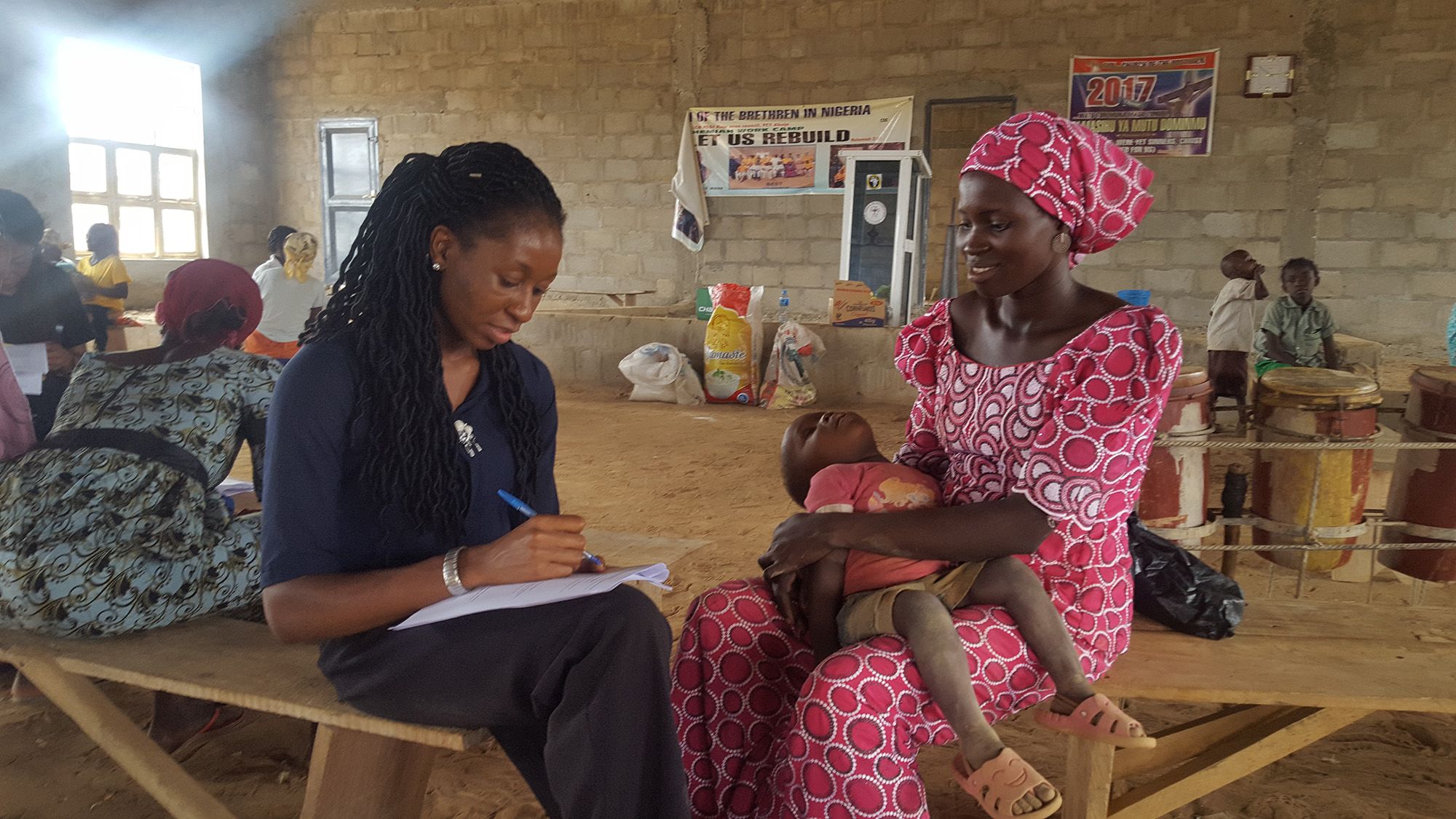
The Kuje camp is one of over 15 IDP locations that include informal settlements and host communities within and around the capital city. They are not necessarily officially designated or structured facilities. Because of the large number of displaced people, makeshift environments with houses for rent (usually for around 2,000 naira, or $6 per month) have become IDP settlements. That’s the case for Kuje, home to 575 IDPs (126 men, 137 women and 312 children). They come from Chibok and its surrounding communities in Borno state whose residents have fled the Boko Haram crisis since 2014.
Lydia, who left her parents and other family members behind in Chibok, is unsure of their whereabouts. At the camp, she lives with her husband (whom she met and married here) in a rented house made of cement and a zinc roof. Her days are mostly idle, except when a charitable organization visits to conduct activities with the IDPs. She was taught to sew a year ago during a free vocational-skills class, but hasn’t been able to work because she does not own a sewing machine.
Boko Haram strikes again
Soon after news of the Dapchi abduction broke, several stories circulated about how exactly it had happened and who was behind it. I sat down with two women who live and work in Borno state to get their perspectives.
Hauwa Bah Abubakar is chair of the Women, Peace, and Security Network NGO in Yobe. She visited Dapchi a day after the abductions. Several reports circulated about the abduction, largely based on anecdotes from community members claiming to have witnessed what had happened. One resident said the abductors were dressed in military uniforms and turbans and fired indiscriminately shouting “Allahu Akbar” (“God is greatest”). Abubakar also told me that the community was in disarray. However, several days after the abductions, she added, parents of the girls were able to form an association to search for their daughters, not waiting for the government to act.
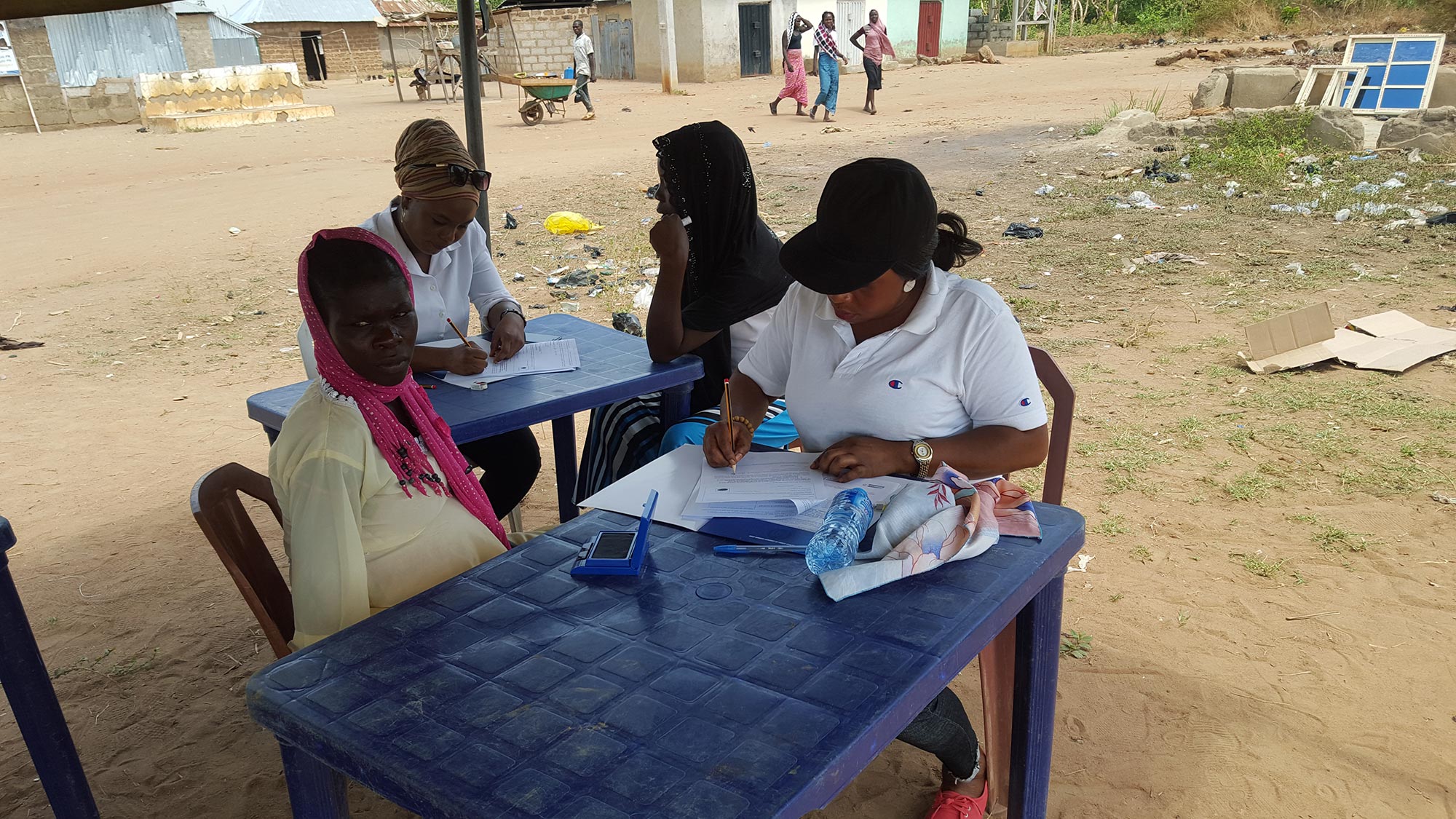
The girls are believed to have been deceived into boarding their abductors’ trucks, told they would be rescued from Boko Haram. Within days, the Nigerian president, Muhammadu Buhari, set up a 12-member committee comprised of military and security officials, together with representatives of the Yobe state government, to investigate the abduction and advise on apprehending the abductors. However, many Nigerians shrugged off the news as just another political tactic to pretend to be addressing the issue.
On March 21, in a shocking twist of events a month after the Dapchi abduction, I heard news breaking on the radio announcing that the Dapchi girls had been voluntarily released. I was in a taxi around 9 a.m., and the driver laughed out loud. “What do they mean ‘voluntarily?’” he said. He felt there was more to the story than was being disclosed. The report said 104 of the 110 girls were “dropped off” by their Boko Haram captors early in the morning. Five had died in captivity and a 15-year-old girl (Leah Sharibu) was not released because she had refused to convert to Islam. Although the return of the girls brought great jubilation in Dapchi, it also raised many questions. One eyewitness speaking on TV said that the insurgents had entered Dapchi waving flags and saying they had come in peace.
Asked about the return of the Dapchi girls, the chairwoman of the #BringBackOurGirls campaign, Florence Ozor, stated that the team was grateful for the release, but noted that the abduction was an “avoidable tragedy.”
Meanwhile, Boko Haram has left thousands of families living in abject poverty. “They are hungry, sick, and malnourished. They lack all basic amenities. They are depressed and hostile,” said Amina Yusuf (name changed), a community worker based in Maiduguri, the capital of Borno, during a meeting of the Women, Peace, and Security Network (WPSN) in February 2018. Amina works with the wives of men who have been recruited to join Boko Haram. The women are between the ages of 18 and 30. She told me that although she interacts with the women occasionally, she is not sure if they are still in contact with their husbands.
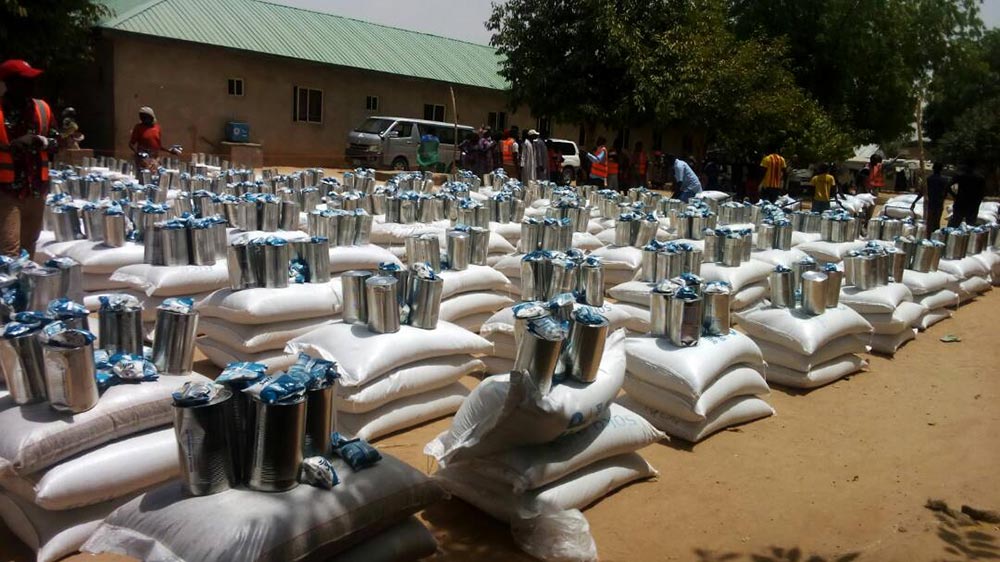
Amina also works with released women and girls who have been impregnated by Boko Haram militants. “This is what we are battling with now in our organization; the women are released with all the children they have had for Boko Haram” with no one to help take care of them. Many of the children become marginalized for being “Boko Haram babies.”
Amina explained Boko Haram’s success by pointing to the group’s very good informants within the community, who enable it to carry out many of its attacks. Boko Haram also has supporters within the communities and because “these are our brothers,” the militants are not easily detected when they mingle with local residents.
The effect of the militant group’s reign of terror is devastating. Residents are no longer able to farm because the insurgents have occupied the bush. People have deserted their hometowns for IDP camps in the state capital or other nearby states where they can find food and some money in the form of monthly stipends from humanitarian organizations.
Fear of being potential military targets has also driven people away from their homes. In January 2017, a Nigerian fighter jet killed more than 170 people when it dropped bombs on the town of Rann in Kala-balge Local Government Area of Borno state after receiving what turned out to have been false information about Boko Haram movements in the area. The director of the international aid organization Médecins Sans Frontières (MSF) characterized the tragic incident saying, “People had sought safety in what they thought was a protected site. Instead, they were bombed by those who were meant to safeguard them.” The incident “too clearly illustrates the dire situation in Borno state,” he added, “where extremely vulnerable people remain trapped in a cycle of daily violence between the Nigerian military and Boko Haram.” The intense violence has prompted the displacement of nearly three million people in recent years, who are “still in urgent need of protection and assistance.”
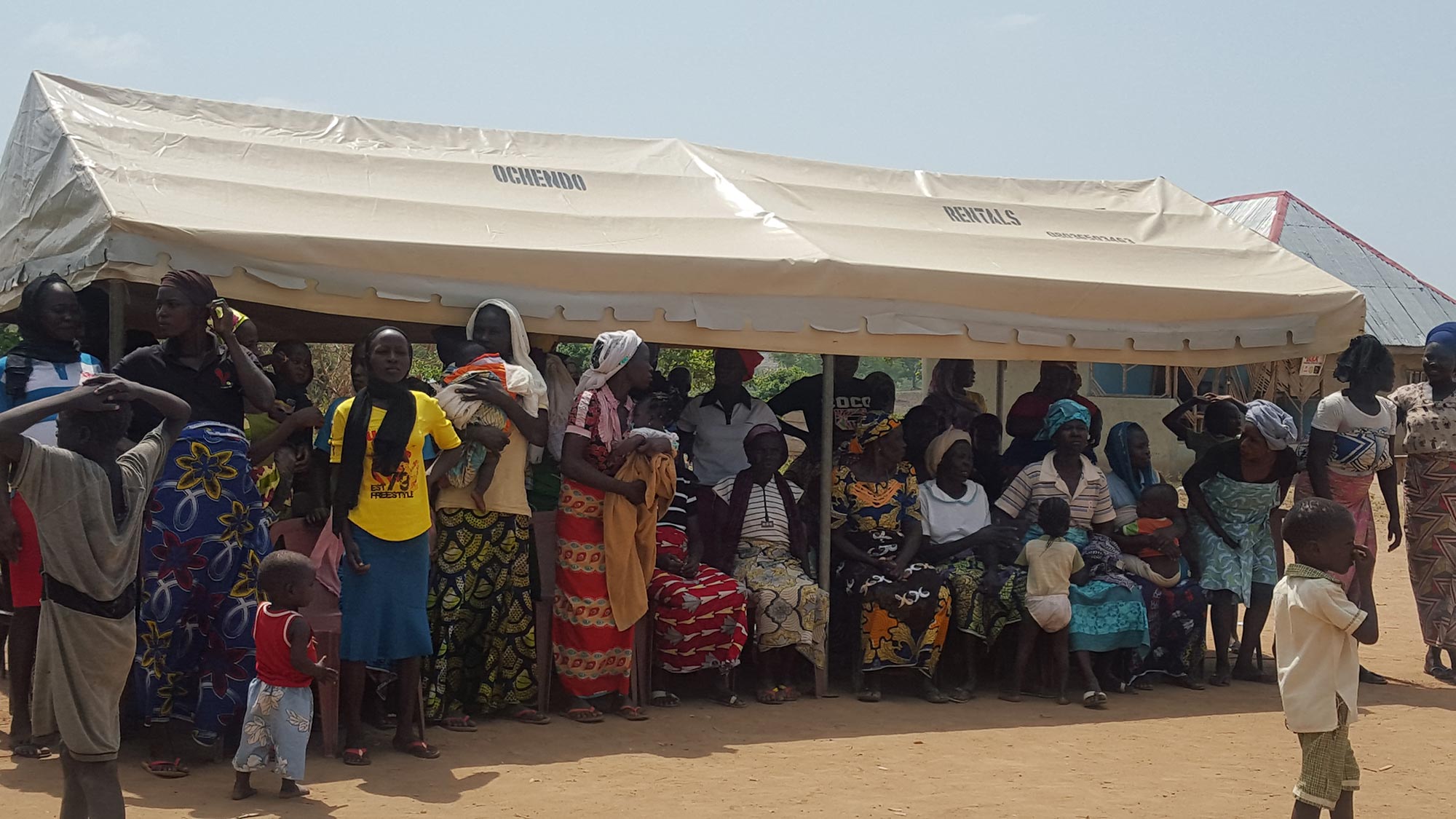
Protecting Girls from Kidnapping
The Dapchi girls’ abduction and release caused many Nigerians to question the government’s role and response. Reports said security personnel had been removed from Dapchi a day before the kidnapping. How could 110 girls be successfully abducted from a school in a similar community as Chibok? Had the government learned no lessons?
Apparently not, says Hauwa of the WPSN. She believes the government and local organizations failed to educate local residents following the Chibok kidnapping. “The girls are ignorant of risks,” she said. “They lack life skills to identify danger and protect themselves.” The authorities failed to learn their own lessons, she added. “Nobody thought about using the experience of the Chibok abduction to build the capacity of all girls [and community members] on early warnings of danger.” Indeed, the Chibok girls weren’t the first to be abducted by Boko Haram. Boys are also targeted, often taken from their homes to be trained as Boko Haram fighters, while girls are abducted to “take care of the men.”
The International Committee of the Red Cross (ICRC) facilitated negotiations and paid the ransom for the release of some of the Chibok girls last year and also for three lecturers from the University of Maiduguri in February 2018. But critics say such payments only fuel more abductions. “The government should stop paying ransom,” Hauwa says. “It’s because they’re paying very high ransoms, that’s why the kidnappers have found it to be a lucrative business and have been able to mobilize resources to sustain their activities.”
Many questions remain about the activities of Boko Haram in Nigeria. The unpredictable situation in the north has stirred fear and anxiety among many residents who continue to seek safe havens in other states and across national borders. At the very least, early warning and response systems are needed. “If we had learned anything [from Chibok],” said Amina, the community worker from Maiduguri, it’s that “there’s no way the government would have put a school—a girls’ school—in that isolated place [Dapchi] without proper and tight security.”
“We haven’t learned any lessons.”

